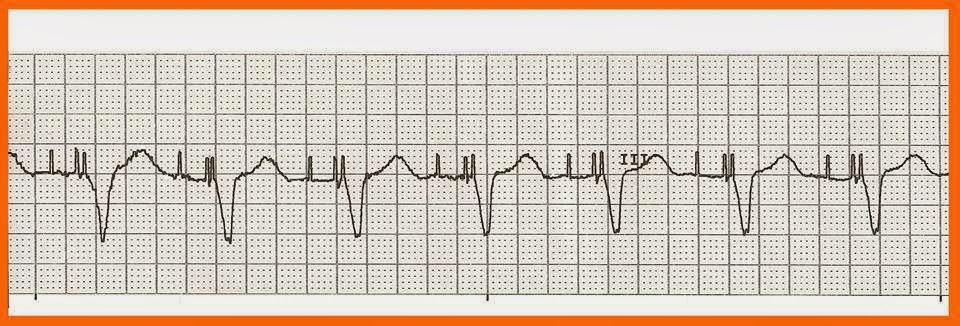Basic EKG Rhythm Test 20

Identify the following rhythms. 01. a. First Degree block b. Second degree block type I c. Second degree block type II d. Third degree block 02. a. Atrial paced b. Biventricular paced c. Dual paced d. Ventricular paced 03. a. Sinus bradycardia b. Junctional rhythm c. Idioventricular rhythm d. Agonal rhythm 04. a. Atrial flutter b. Atrial fibrillation c. 2nd degree heart block type II d. NSR with PACs 05. a. Atrial paced with a multifocal couplet b. Biventricular paced with a multifocal couplet c. Dual paced with a multifocal couplet d. Ventricular paced with a multifocal couplet 06. a. Polymorphic ventricular tachycardia b. Ventricular fibrillation c. Torsades de pointes d. Atrial fibrillation 07. a. NSR with a pause b. Sinus arrhythmia c. Wandering atrial pacemaker d. Atrial fibrillation 08. a. NSR with bigeminal PVCs b.




